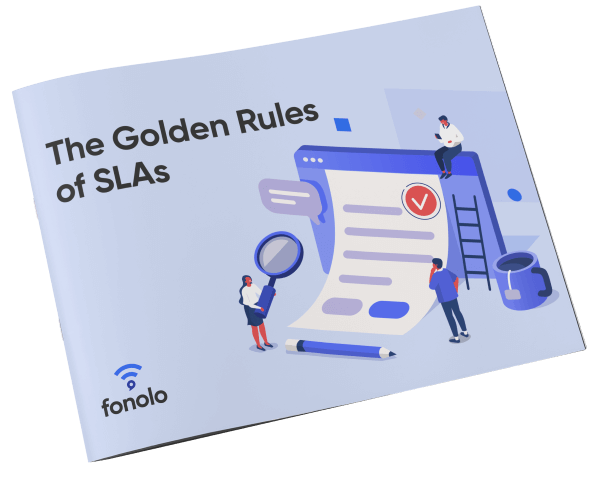It’s easy to focus attention on all the changes that the contact center has undergone in the last few years. There’s been a radical transformation in the way we communicate with each other, and with companies. Today’s younger consumers can’t remember a time when the only way to reach a company was to go there in person or dial a phone. (For that matter, most of them don’t know why we even use the verb “dial”!)
But, despite all those changes, many aspects of the contact center operation haven’t changed. Calls come in, wait in a queue, connect with an agent, then hopefully get resolved. Many of the metrics that were designed decades ago are just as applicable today. Of these “classic” performance metrics, Service Level is the king.
Service Level Definition
Service Level is defined as a pair of numbers: a percentage value and a time value in seconds. So, for example, an “80/20″ service level means 80% of calls answered in 20 seconds. In fact, that exact combination is considered an industry standard by most people.
Why is “80/20” the Standard?
Surprisingly, no one has a conclusive origin story for 80/20. But the “myth” of the 80/20 standard is now deeply rooted in the industry, like an urban legend that can’t be debunked.
One analyst told me that that 80/20 was “hard-wired” into the original call center platforms made by Rockwell in the 1970s. Rockwell, which got out of the call center business in 2004, was one of the pioneers of the technology. (There’s debate over whether Ericsson or Rockwell were actually first to market with a true ACD.) I’ve read, in other places, that it came from an AT&T study, conducted some 30 years ago, that found that callers tended to hang up after 20 seconds in the queue.
Whatever the story is, clearly we need to approach this “standard” with skepticism.
For more on this see Why 80/20 is Probably the Wrong Service Level for your Call Center.
Service Level Pitfalls
If your call center picks a service level arbitrarily and then tries to meet it, resources will get allocated the wrong way, resulting in more harm than good.
But even if you’ve picked a service level through careful analysis there’s another pitfall. The nature of the service level formula means that it can hide dangerous variability. For example, if your agents successfully met 80/20 all day, you know that 80% of the calls were answered in under 20 seconds. But you know nothing about how bad the other 20% were. Were their wait times 30 seconds or 10 minutes? This variability is critical.
Another pitfall can arise from having multiple skill groups in your call center. Averaging across the groups to get a single service level can obscure problems in specific groups. Measuring each group separately is smarter, but that leaves you with too many numbers to interpret. This is actually an argument against dividing your workforce in to skill groups.
Picking a Service Level Goal
Picking the right Service Level for your company boils down to balancing your company’s desire to deliver customer satisfaction versus the cost you’re willing to bear to achieve it.
Here are three questions you can ask yourself to work through this process:
- How do I want to prioritize my customers’ wait time? (Consider Customer Lifetime Value or Propensity To Buy)
- After how many seconds in queue does the likelihood of call abandonment start to rise? (If you have a call-back solution, this is the right time for the caller to hear the offer message so they can choose to receive a call-back rather than abandoning the call.)
- What is the impact of increased abandonment rate on sales or customer satisfaction? For more, check out this whitepaper.
I hope this adds some clarity around the important topic of service level metrics.

The Golden Rules of SLAs
If you’re looking to quickly study up on SLAs, look no further. Download this free white paper to become an expert.
